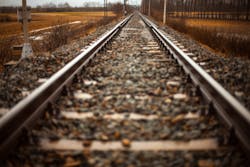Reducing Train Accidents and Derailments through Data Analysis
Train accidents and derailments are not uncommon. In fact, there have already been several major incidents in 2016, including an Amtrak derailment in Kansas which injured 32 people and a head-on collision between two trains in Germany which killed ten and critically injured 17. Although not all train accidents are as catastrophic, the smallest incidents, such as train separations, still have the ability to ruin the reputation and credibility of railway companies.
In order to cut back on train accidents and derailments, major railway companies are enlisting the help of consulting firms to analyze event recorder data (the railroad equivalent of the “black box”) after incidents occur, conduct preventative evaluations as well as perform testing services. These consulting firms specialize in the application of highly analytical skills to address rail issues and have extensive experience with safety regulations and standards around the world. Additionally, these private consulting firms provide unbiased and factual reports as to what caused accidents or derailments, which can be used to make improvements to the railway infrastructure and prevent future occurrences.
Investigating the Data
Jack Chislett, director of operations analysis, TÜV Rheinland Mobility, Rail Sciences Division has more than 30 years of railroad consulting experience and has extensively used simulations while investigating the cause of rail issues for railway companies. One of Chislett’s latest investigations was to determine how a large freight train became separated, an event known in the industry as a “break-in-two,” upon startup after stopping on a slight ascending grade. The train, made up of three head end locomotives, 7,433 trailing tons and measuring 6,745 feet long, suffered a broken knuckle on the 13th car when it began to throttle-up. With the data pulled from the train’s event recorder data, Chislett used the advanced data analysis and graphing software, Origin, to graph the actual train handling and in-train forces during stop and re-start. The drawbar forces predicted by the modeling are shown near the bottom of the graph (2nd plot from bottom).
From the data, Chislett was able to determine that there was a rapid increase in drawbar force upon the train’s start up. Prior to analyzing the data, it was speculated that the mode of braking and the slightly ascending grade were the possible factors that caused the knuckle failure.
To stop or slow, trains typically rely on some combination of three braking systems, including dynamic braking, which entails use of the locomotives’ electric motors to dissipate energy; air-braking system, that operates throughout the train; and independent brakes on board the locomotives. In this particular break-in-two case, the event recorder data confirmed that a combination of dynamic and air-braking was used to stop the train prior to the break-in-two.
Creating a Simulation
In order to have a better idea of how to prevent this incident from occurring in the future, the railway company requested a simulation of an alternate case in which locomotives were kept under light throttle during the stop, while braking was accomplished by train air-brakes only. The data showed that under these conditions, the train would have come to rest in a lightly stretched state. In contrast, Chislett’s simulations of the actual case in which the train was stopped using a combination of dynamic and air-braking, showed the train coming to rest in a bunched, compounded state.
In this bunched state, the release of the brakes just prior to throttle-up resulted in each car rolling backwards just as the locomotives were applying force in the opposite direction. This action amplified the forces being applied to each car and led to the failure of the knuckle on the 13th head car.
The column plots in the illustration show the simulated drawbar force profiles for the actual case (left) and the alternate case (right). These plots clearly showcase that the drawbar forces on throttle-up would have been much greater in the actual case in which the train had been previously stopped using a combination of dynamic and train air-brakes.
Drawing a Conclusion from the Results
The ability to show multiple variables on one graph, including the track profile, train handling, speeds and calculated forces, allowed the railway company to see the effect of each variable on the others. From the graphs, the longitudinal forces were predicted by a transportation industry standard model. In this case, the use of both dynamic and train air-brakes caused a bunching of the train. Prior to throttle-up, the brakes were released, allowing the train cars to roll backwards on the slightly ascending grade, which created and amplified high run-out forces leading to drawbar breakage.
In the simulations of an alternate braking case wherein the locomotives were kept in light throttle while only train air-brakes were applied, produced a lightly stretched train and subsequently, a much lower and more static force distribution at the drawbar, across all cars.
The Future of Railway Assessments
The ability to use graphing and data analysis software in investigative work has enabled railroad consultant experts to see what measures could have been taken to prevent accidents and/or derailments. 2014 was logged as the safest year on record for freight train operations in the United States in the Federal Railroad Administration’s (FRA) April 2015 report and this is at least partially due to timely investigations and analysis of derailments and train accidents. More insight provided to railway companies will further advance their technological improvements, company-wide safety programs and overall railway operations as well as lead to safer rail travel standards.
Easwar Iyer is vice president of technology with OriginLab Corp.
